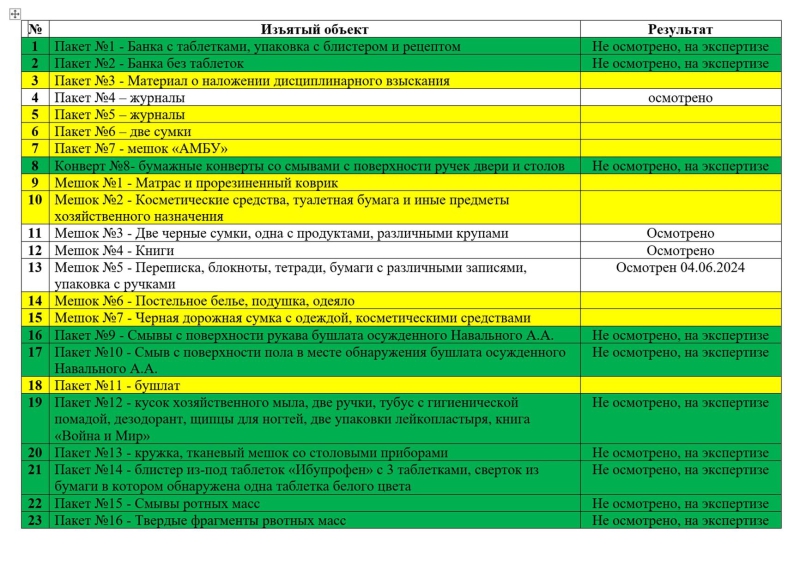The Insider has obtained access to hundreds of official documents related to Russian opposition leader Alexei Navalny’s death in the Polar Wolf penal colony in the Russian Far North on Feb. 16, 2024. Officially, Navalny’s death was attributed to natural causes, and Russia’s Investigative Committee stated in July that the case “does not have a criminal nature.” However, the contents of the documents in The Insider’s possession demonstrate that Russian authorities consistently removed references to symptoms Navalny was noted by prison doctors to have been suffering — symptoms that did not fit with the Russian state’s official cause of death. As medical experts confirm, these symptoms clearly indicate that Navalny was poisoned.
A collection of files at The Insider's disposal contains two versions of a document signed by Russian investigator Alexander Varapaev. The document in question concerns the Russian Investigative Committee’s decision not to open a criminal case in connection with the Feb. 16, 2024 death of the late opposition leader Alexei Navalny in a Russian prison in the Russian Far North. An early version of Varapaev’s decision describes Navalny's symptoms as follows:
“On 16.02.2024, convict A.A. Navalny felt a sharp deterioration of his health condition while in exercise yard No. 2 of the EPKT [unified cell-type housing unit], about which he informed the duty officer of the institution, who took the latter out of the premises of the exercise yard to the premises of section No. 4 of the EPKT.
“There, convict A.A. Navalny lay down on the floor and began to complain of sharp pain in the abdominal area; he started reflexive ejection of his stomach contents, had convulsions, and lost consciousness, which was immediately reported to the medical staff of the correctional facility.”
The symptoms described by Varapaev are consistent with those that would have been expected had Navalny been poisoned. However, in a later (and final) version of the same decision, all mention of abdominal pain, vomiting, and convulsions had been removed.
The Insider has another important document at its disposal — an inventory of “seized objects” taken from the scene of Navalny’s death. The list includes “samples of vomit,” which the document indicates were submitted for examination. However, neither the fact of the examination nor Navalny’s vomiting were ever officially reported.

The documents confirm the words of Yulia Navalnaya, who stated that “in the last minutes before his death, [Alexei] complained of acute pain in his stomach.” Nevertheless, the official conclusion reached by Russian authorities claimed that Navalny had died of natural causes, and that the incident “does not have a criminal nature.”
Feb. 16, 2024, was not the first time Navalny suffered a medical emergency as the result of the Russian state’s deliberate attempts to murder him — and it is not the first time that the official explanation given by Russian officials has diverged from established medical facts. In August 2020, Russian FSB agents poisoned Navalny using a variant of the Novichok nerve agent, which took effect while the opposition politician was aboard a flight from Tomsk back to Moscow. His symptoms were so severe that the plane made an emergency landing in Omsk, where medical professionals likely saved Navalny’s life by treating him with the chemical nerve agent antidote Atropine. However, the official version put out to explain the onset of Navalny’s symptoms on the airplane was that the patient had simply been suffering from the results of “low blood-sugar” levels.
According to ER doctor Alexander Polupan, who treated Navalny in Omsk City Hospital No. 1 after the Novichok poisoning in 2020, the symptoms observed by medical professionals in the case of Navalny’s death in prison in 2024 do not fit with the officially declared diagnosis:
“The official cause of death — a heart rhythm disorder — would in no way explain the symptoms described in the resolution: sharp abdominal pain, vomiting, or seizures. These symptoms can hardly be explained by anything other than poisoning. The short interval between the abdominal pain and the convulsions suggests the possibility of exposure to an organophosphorus agent, for instance — the same class of substances as Novichok, but in this case it may have been applied internally rather than topically.”
Other doctors of various types interviewed by The Insider agree with Polupan's conclusions.
Further evidence, albeit indirect, of the use of a poisonous substance can be observed in the authorities’ reluctance to release Navalny's body for several days following his death, along with their refusal to allow for an independent examination of biological samples. While suspicion surrounding the true cause of Navalny’s death arose almost immediately after it was announced, it was not until now that the fact of Navalny's poisoning has been confirmed by official documents.

